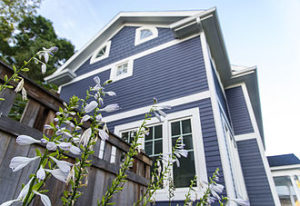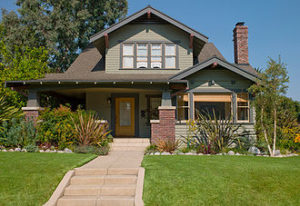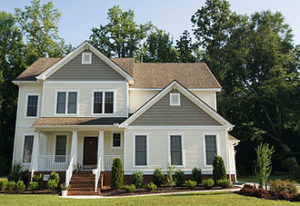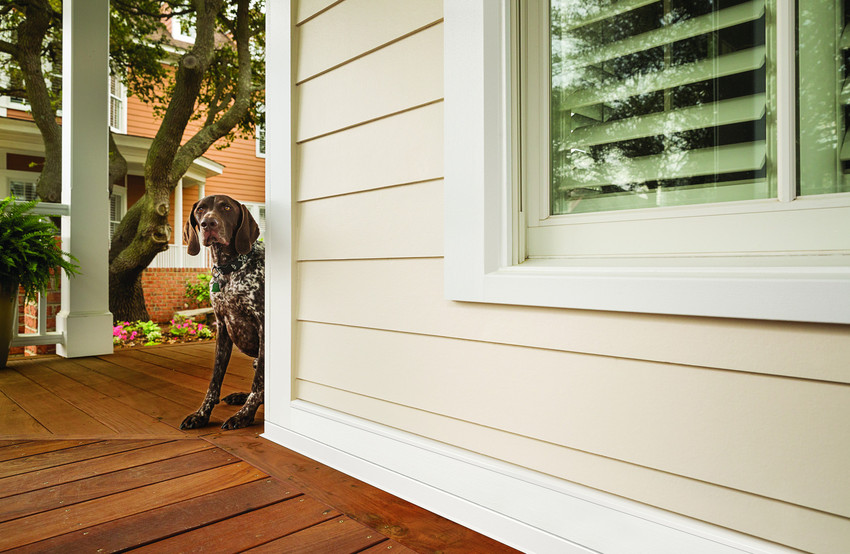New Siding
Siding is an attractive and durable material covering the exterior of your home. Whether you’re building a new home or just doing some updating, new siding can improve the appearance and curb appeal of your house while increasing the overall value of your home. Most siding composes the very outside layer of your home’s exterior and serves to protect and insulate.
Green Built Northwest siding carpenters are knowledgeable in the latest building trends. So whether you just need to replace that old LP siding or failing stucco with hardiplank (fiber cement siding) or you want to install a rainscreen system on your home, we can help you create the look, energy savings and eco-friendly design of your choice.
There are several types of siding available including vinyl, engineered wood, wood, aluminum and fiber cement siding. The type of siding you choose will affect your home’s aesthetic appeal and will also have a large impact on installation and maintenance costs. We can help you decide what type of siding is right for you and your home.

James Hardie® fiber cement products combine beautiful design with high performance. Fiber cement doesn’t attract pests and resists water absorption to help protect against mold, swelling and cracking— getting our customers more mileage for their dollar. Wood may split, crack and deteriorate over time, while James Hardie siding resists weather damage and keeps its shape for a much longer time, which means less maintenance to worry about year after year.
James Hardie has been praised by style-centric consumer magazines, contractor-focused trade publications and media that promote environmentally friendly building. If you opt for the ColorPlus siding, their baked-on technology has greater resistance to fading, chipping and cracking, meaning less maintenance for you.
Plus all the James Hardie siding products we offer come with a 30-year, non-prorated warranty and trim products come with a 15-year, non-prorated warranty.
Fiber Cement Siding
 Fiber cement is made up of sand, cement and wood/cellulose fibers. It’s very durable and can withstand intense storms, but it is very heavy and requires special tools and knowledge to install properly. The most popular fiber cement siding is HardieBoard.
Fiber cement is made up of sand, cement and wood/cellulose fibers. It’s very durable and can withstand intense storms, but it is very heavy and requires special tools and knowledge to install properly. The most popular fiber cement siding is HardieBoard.
Pros of Fiber cement siding:
-
This type of siding stands up well to moisture and rain. It is very durable and withstands harsh weather for many, many years. The siding protects the home from wind and rain damage as well as hail, and can withstand hurricane level storms.
-
The material is not flammable. Fiber cement is made up of more than 90 percent of inflammable material. In one reported incident, a fire destroyed fire trucks almost 100 feet away from the flames, but the home constructed with fiber cement was completely protected.
-
The appearance of fiber cement siding is perhaps the most surprising aspect of the material. Fiber cement can resemble wood planks or wood shingles. A homeowner does not have to sacrifice the traditional look of a home to gain the many benefits of fiber cement siding. The siding is also available in a variety of colors; or, if a color is not suitable, the siding can be painted.
-
Fiber board cement siding offers complete protection from insects and rotting. The siding has no seams that overlap, which prevents mold or mildew from growing between the outside and interior walls. This feature lessens allergens within the home, further protecting a homeowner’s family.
Fiber cement board has all the benefits of other sidings with few disadvantages, and is an extremely popular option with homeowners because of this.
Wood siding
 Wood siding offers a lot of character. Most often milled from sustainable resources, it’s very versatile and can be stained or painted in any color desired. Installation and repair are easy, and it comes in shingles, clapboards, drop siding, vertical boards, and wooden sheet siding.
Wood siding offers a lot of character. Most often milled from sustainable resources, it’s very versatile and can be stained or painted in any color desired. Installation and repair are easy, and it comes in shingles, clapboards, drop siding, vertical boards, and wooden sheet siding.
Wood is one of the oldest types of siding materials and is commonly found in period homes from the Colonial era onward. Because it’s a natural material, wood needs special attention and treatment to remain both beautiful and functional over time. At the least, this involves re-staining and painting your wood siding every few years as well as performing annual inspections to check for rot, pests and other damage. Immediately addressing not only damaged areas but the cause of that damage — such as a faulty gutter, for example — is critical for preventing similar damage and expensive repairs from occurring in the future.
Pros of Wood Siding
-
Wood can be stained or painted in limitless colors and finishes.
-
Wood is an environmentally friendly choice. It does not emit pollutants during the manufacturing process, it is biodegradable, and it is also considered a renewable resource.
-
Wood siding is durable enough to last for decades, if maintained properly.
-
There are multiple species of wood to choose from. Cedar siding is probably the most common siding in the Seattle area.
-
Upgrading to wood siding can add value to a home, because it is considered a high-end siding. When you’re ready to sell, it will give your home a slight boost in resale value.
Cons of Wood Siding
-
Maintaining wood siding can be costly and tiring. Some styles will need to be stained at least every two to three years to prevent moisture damage, and paints on wood siding should be reapplied every four to five years.
-
Wood attracts termites. An annual pest-control inspection should be scheduled to prevent infestations. Remember that it is more cost-effective to prevent termites than to repair damage after the fact.
-
Wood siding can be expensive when compared to other siding options, though this depends on the style and type of wood selected.
-
If wood becomes cracked, rotted, or the victim of a woodpecker’s bill, it needs to be replaced immediately. A damaged strip of wood siding can allow water to seep into a home and cause additional problems such as interior mold growth.
-
Many wood shingles and shakes have poor flame spread fire ratings. This can increase the cost of home insurance. However, Class A fire ratings are available for certain wood shingle products that are made with a fire-resistant treatment.
-
Wood siding must be cleaned once a year to remove the buildup of dirt and mildew. It is recommended that homeowners use a soft-bristled brush rather than a power washer, which could cause damage due to its high water pressure.
Vinyl siding
 Visually, vinyl has a great advantage over other siding choices; it can look like just about anything.
Visually, vinyl has a great advantage over other siding choices; it can look like just about anything.
Colors
There is a wide variety of colors available for vinyl siding. As it is blended into the vinyl itself, every color is as rich as possible and won’t show scratches easily. When selecting a color, you’ll be able to pick from a selection of 40 or 50 options. If that palette isn’t giving you what you want, ask about custom colors.
Styles
Vinyl can be made to look like different materials. Because it’s molded at the manufacturer’s site, it can be had in the following styles:
- Beaded Seam – This style resembles the wood siding of the 1800s. A classic look, it can fit any home, older or modern.
- Smooth – This is a simple style with no texture. The clean look is very popular.
- Board and Batten – Also called “barn style”, alternating wide and narrow strips can be horizontal or vertical. It has a rough texture like cedar wood.
- Shingle – Sometimes called “shake”, the rough, staggered edge gives a warm, rustic look.
Siding Maintenance
Vinyl siding is low maintenance, but it does need it. Cleaning is usually the only form of maintenance you need. A simple garden hose will do the job to keep normal dust and dirt from accumulating.
If mold and other heavier build-up is apparent, a soft-bristled scrub brush and gentle cleaning solution will do the job handily. If you choose to use a pressure washer instead on the vinyl siding, use a low-power setting to avoid spraying water and grime up between the siding and the wall. Small, stubborn spots can be cleaned with any ordinary cleaner and a soft scrub brush. When rinsing, start at the top. Work in small areas and be sure to rinse immediately to avoid stains from your cleaning solution. Regular cleaning is the best way to protect your vinyl siding and avoid repairs.
Vinyl vs. Other Siding
Vinyl developed a bad rap due to early manufacturing techniques that made it inconsistent in color and quality. Modern techniques have improved the material and have made it a top choice in siding. However, there is no one “best choice” since every material has advantages and disadvantages. Compare vinyl siding to other options:
- Wood – Wood siding has a more natural look. Using reclaimed or sustainably harvested wood makes it environmentally friendly, and disposal is very easy. However, it is very high maintenance and costs over twice what vinyl costs.
- Engineered Wood – Engineered wood siding is an emerging material made of wood strands coated in resin and compressed for strength. It boasts strong resistance to the elements, cost-efficiency and an authentic wood appearance.
- Aluminum – Aluminum’s big advantage is that it can be bent to fit unusual shapes while vinyl must be formed to the shape at manufacture. Aluminum can also be painted, but as it dents the paint cracks and flakes off. The cost of aluminum siding fluctuates with the market, but it is very recyclable.
- Fiber Cement – Fiber cement is flame resistant and can withstand hurricane force winds, but that’s about where its advantages end. It costs about 1.5 times more than vinyl siding and will require re-caulking and painting. It also cracks easily.
Pros & Cons – Before deciding on vinyl, consider these upsides and downsides:
Pros
Durable colors. Modern techniques in color make even the darker colors resistant to fading, Because the color is in the material, it doesn’t show chips or cracks easily.
Cost. Overall, vinyl is the least expensive material even when you consider installation. Also, you can recoup around 78% of your cost at sale.
Cons
Water resistant, but not watertight. Wind driven rain can get water behind the siding and cause mold and rot if drainage isn’t put in and the walls aren’t protected.
Can still fade and dull. UV rays are harmful to the color, and though they can resist fading, eventually some fading will happen. Dirt that builds up can cause colors to dull.
Bending and cracking. Extreme weather can cause vinyl to bend and crack. This is especially true where the weather fluctuates between extremes of heat and cold.
Siding that’s Moisture and Rot resistant
James Hardie products are specifically engineered to withstand damage from moisture and rot, come rain, sleet, or snow.


